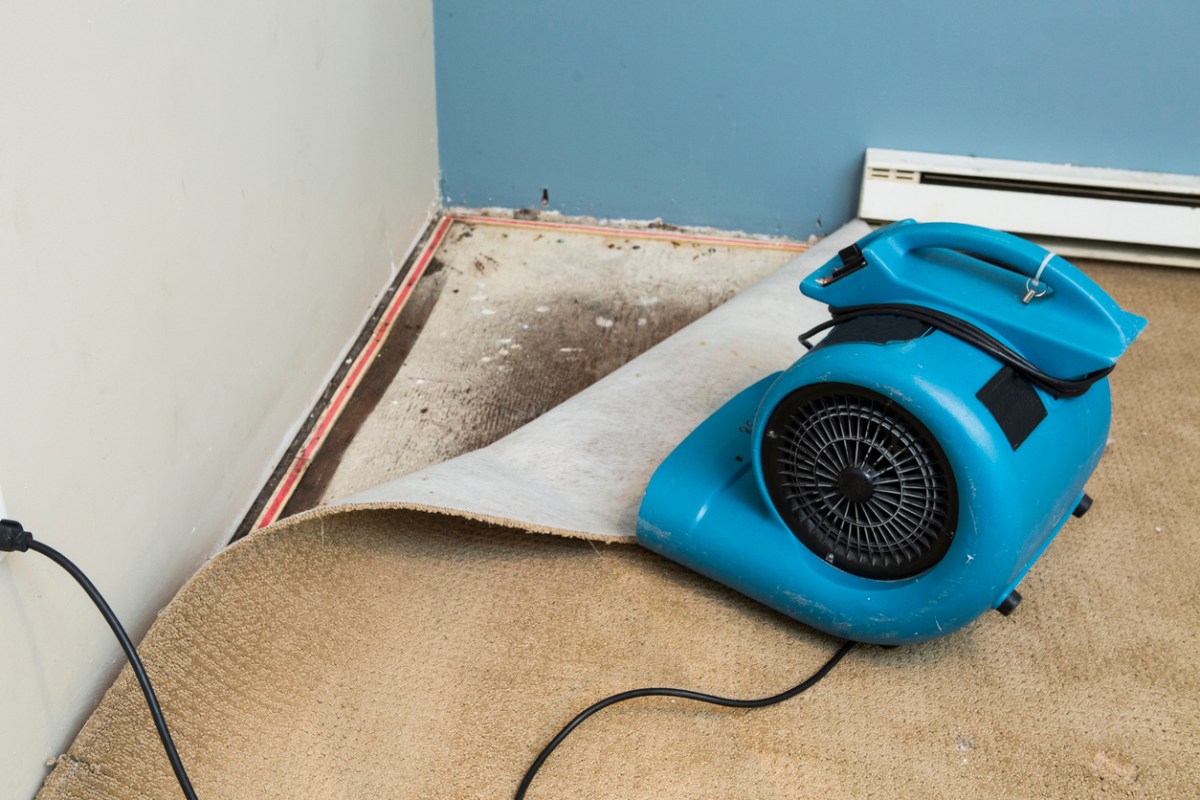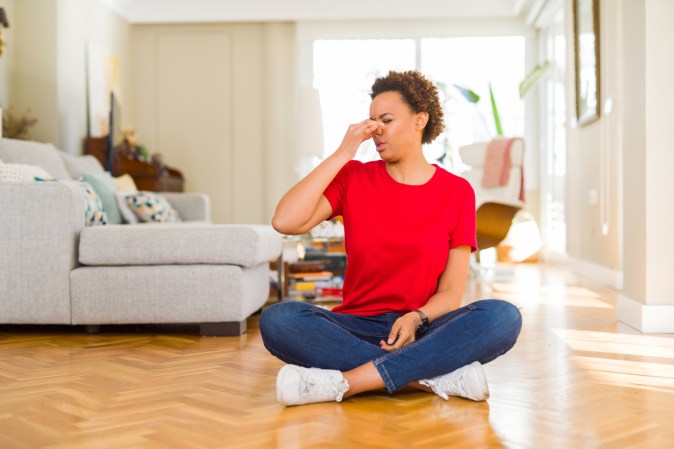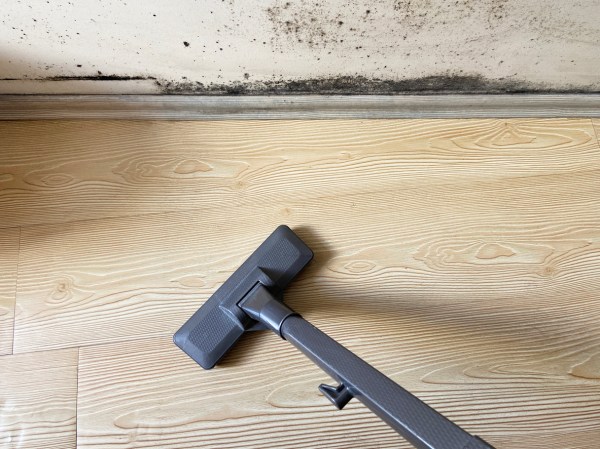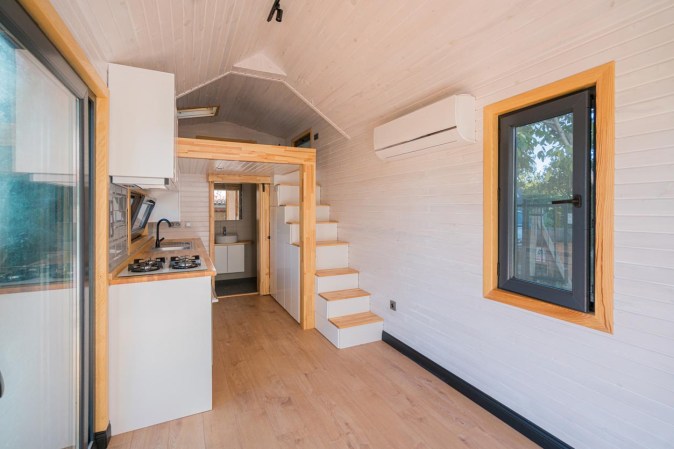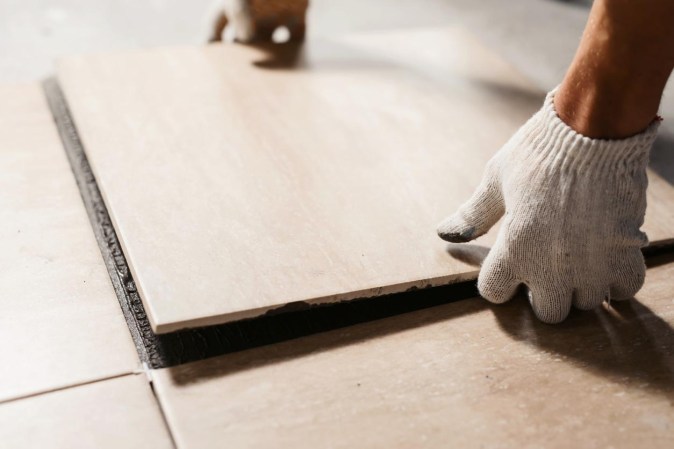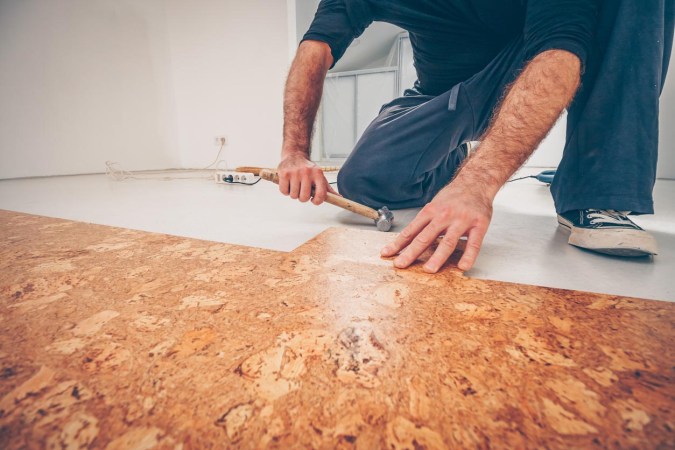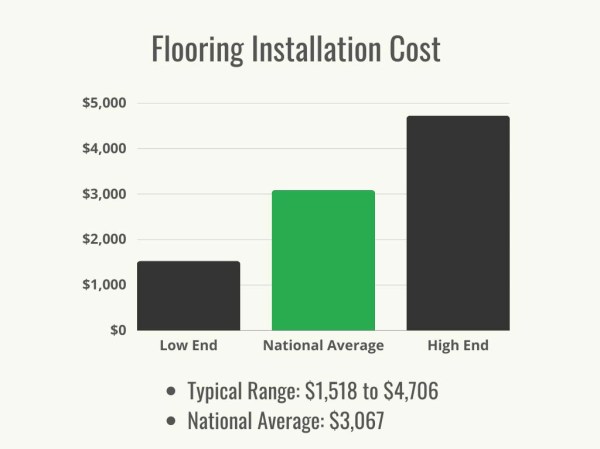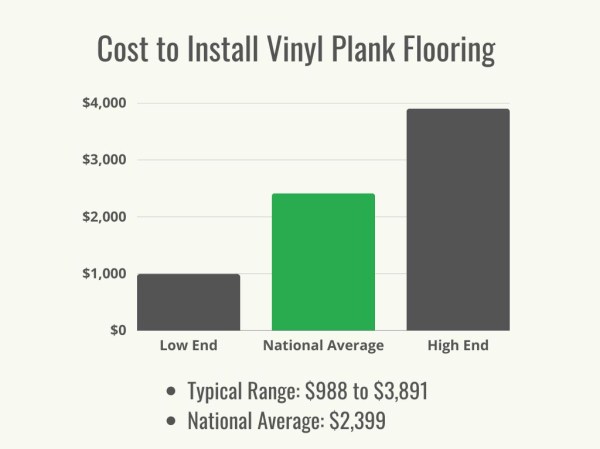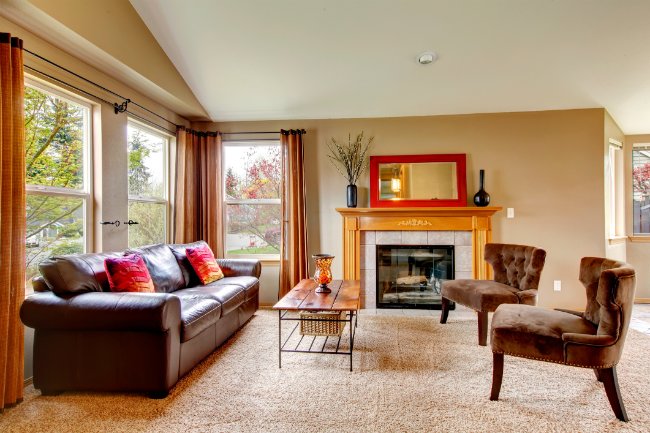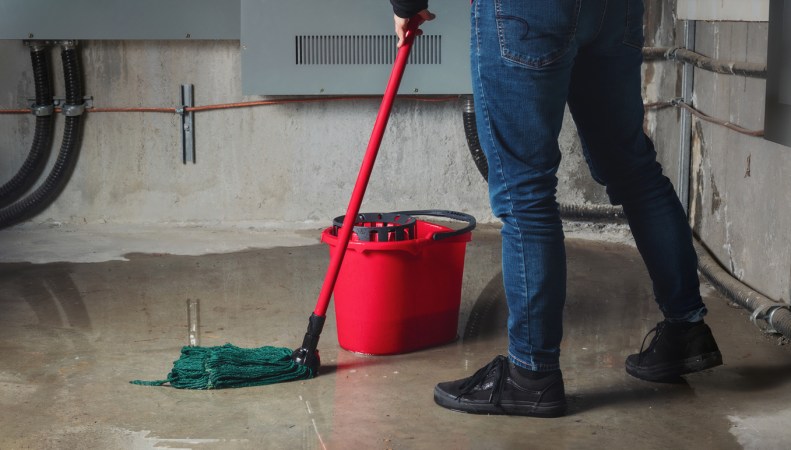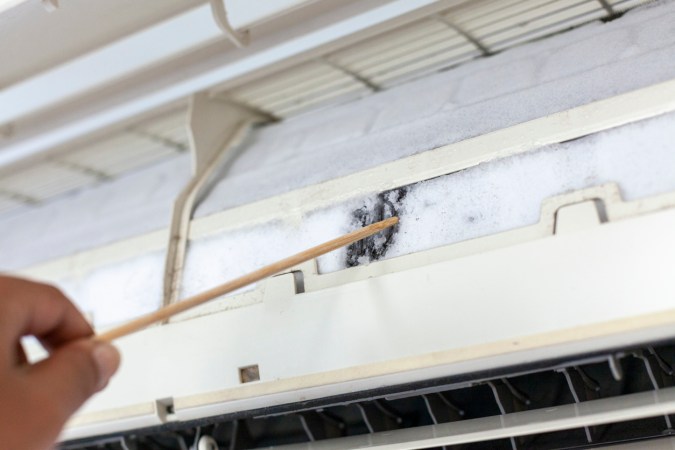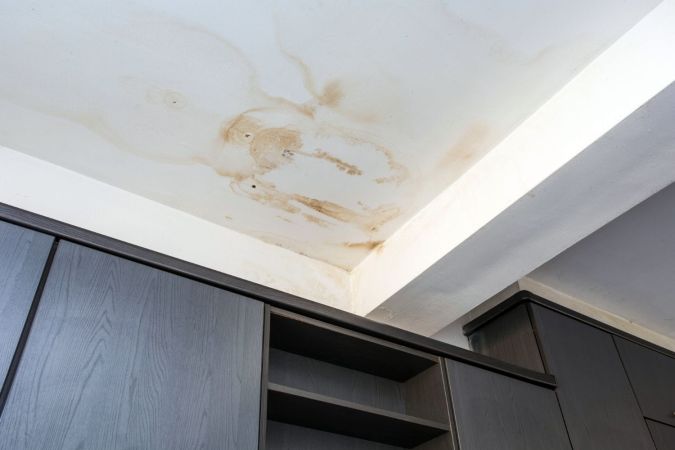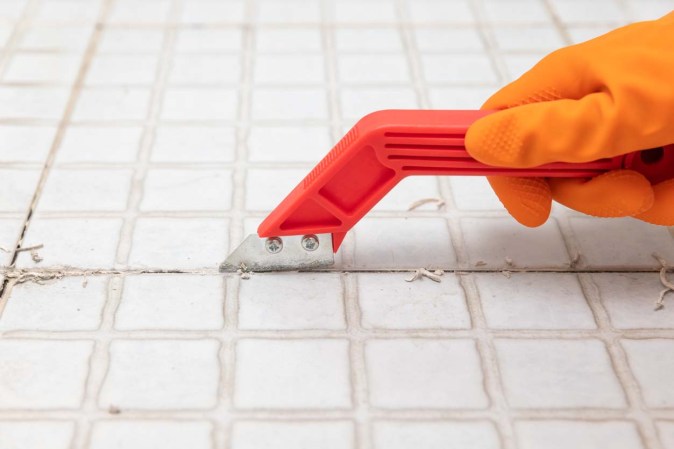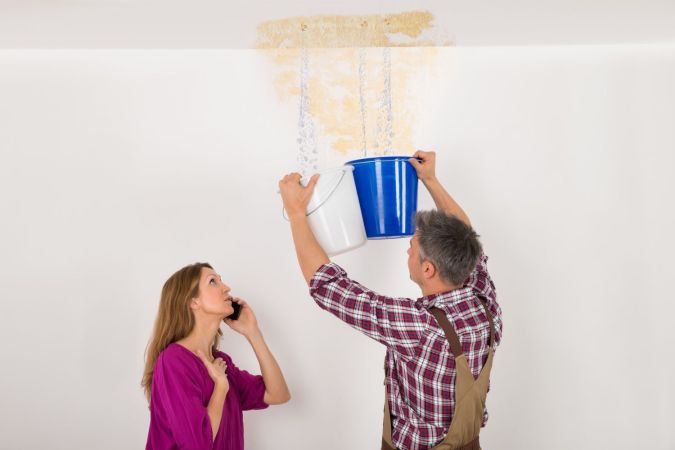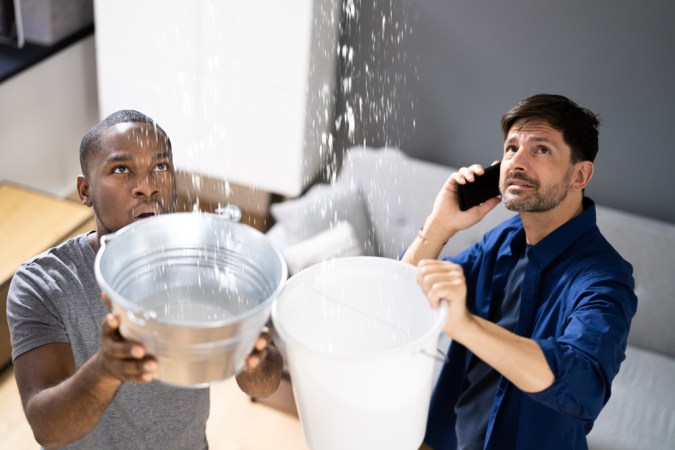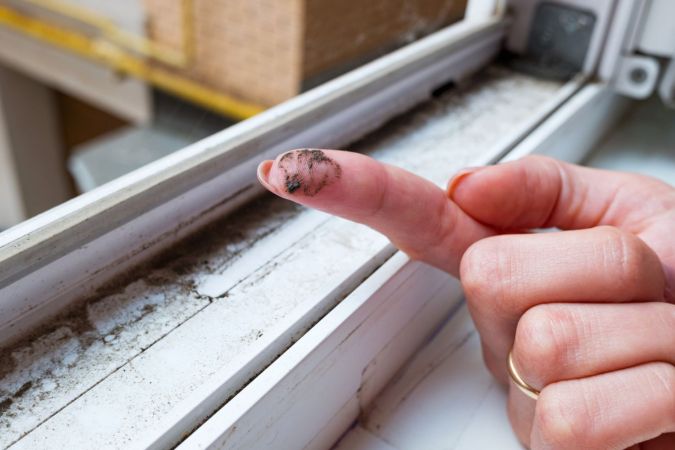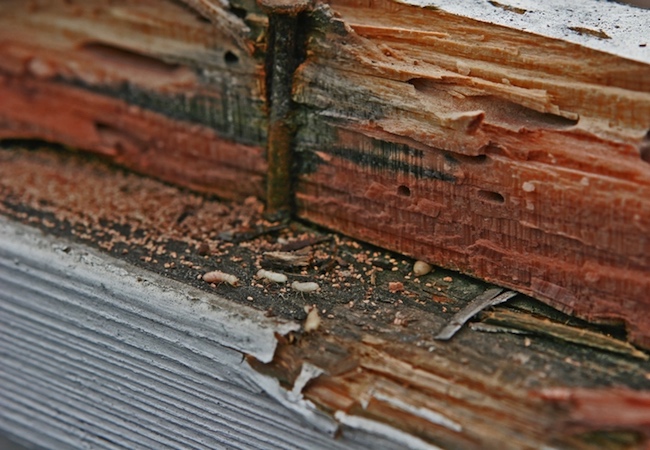We may earn revenue from the products available on this page and participate in affiliate programs. Learn More ›
What You Need to Know
- Water damage under flooring can be caused by flooding, plumbing leaks, and leaky appliances.
- Cupping and warping, bubbling, cracking, discoloration, mold, an unpleasant odor, and a spongy feeling are some of the telltale signs of water damage under flooring.
- Water-damaged flooring can become structurally unsound if left untreated. It can also be a health hazard if a mold or mildew problem develops.
- A water-damage restoration company can take care of any moisture issues that have damaged the flooring. A flooring professional will need to replace flooring that is beyond repair.
Q: I suspect there may be some moisture under my floors. I want to get ahead of the problem before more damage is caused, but I’d prefer not to go ripping up flooring all over the house to look for damage. What signs of water damage under floors should I look for, and how do I address this problem?
A: Water damage can be a nightmare for any homeowner to deal with. While water issues tend to be most common in regions that experience heavy rain or high humidity, burst pipes or sewer backups can happen without warning.
Early detection can reduce its impact and prevent further deterioration, which is why homeowners will want to know the signs of water damage under floors. Musty odors, warped floorboards, or staining are common indicators, but understanding the signs and how to address them can save significant time and resources in maintaining the health and safety of the home.
Causes of Water Damage Under the Floor
Water damage under flooring can come from different sources, and the extent of damage often depends on the amount of water the floor has been exposed to and for how long. Even a small, consistent leak, if left unchecked, can lead to significant damage. The timeline for damage can vary. A substantial amount of water, such as from flooding, can cause immediate harm with water seeping through the floor, while lesser amounts from slow leaks might take longer (sometimes weeks or months) to manifest as visible signs of damage.
The flooring material also plays a crucial role in how quickly damage occurs. For instance, hardwood floors are more susceptible to water damage compared with tiles or concrete. Additionally, the source of water—whether it’s clean water from a pipe, gray water from appliances, or blackwater from sewage—can also impact the severity and type of damage.
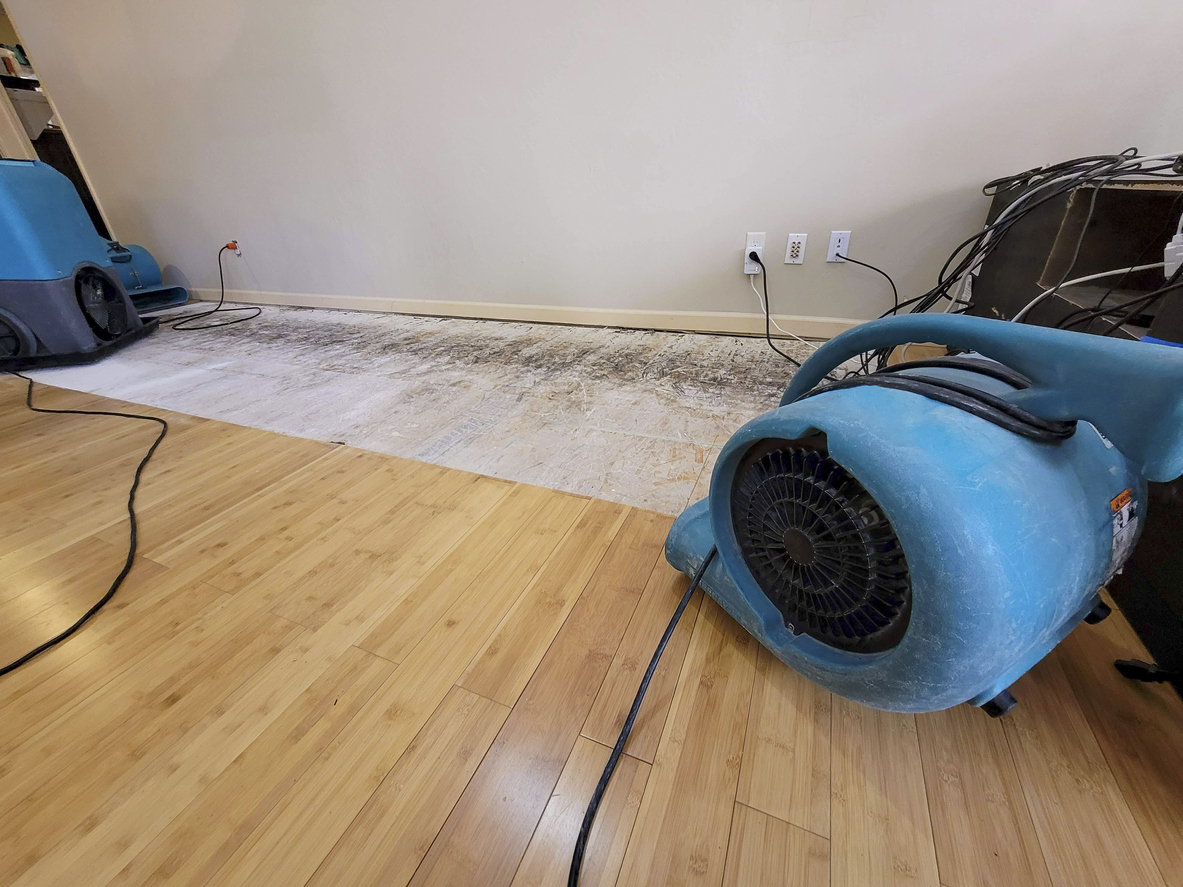
Signs of Water Damage Under the Floor
Homeowners will want to catch the signs of water damage before they see water coming up from the floor. There are several key indicators that a home’s flooring may have sustained water damage.
Some of the most obvious signs of water damage under wooden floors are the floorboards cupping and warping.
An alteration in the shape of the floorboards can be a telltale sign of water-damaged wood flooring. Cupping occurs when the edges of a floorboard rise higher than its center, creating a concave shape. This is usually a result of moisture under hardwood floors, where the bottom of the wood absorbs more moisture than the top. On the other hand, warping leads to a twisted or bowed appearance in the floorboards and is caused by uneven drying and absorption of water. Both of these conditions not only affect the aesthetic of the flooring but also indicate a deeper issue of moisture penetration. Additionally, homeowners may notice changes in color, a distinct musty odor, or signs of mold under the hardwood floors, all of which are strong indicators of wood floor water damage.
On vinyl, laminate, or linoleum, the surface of the floor may appear to bubble or crack.
If a home has vinyl, laminate, or linoleum flooring, water damage may manifest as bubbling on the surface of the floors. This occurs when water seeps underneath these materials and gets trapped, leading to the formation of air pockets or blisters. The trapped moisture causes the adhesive bond that holds these floorings in place to weaken, resulting in sections that lift, swell, or bubble up. The presence of bubbling indicates that water has gone through the floor deeply and might be causing unseen damage to the subflooring or the structure beneath. In addition to bubbling, homeowners might also notice cracking or buckling on certain types of flooring.
“When water damage occurs beneath flooring, it can cause the materials to expand and contract, leading to cracks or buckling,” says Danny Colacicco, founder and CEO of Panda Pro Home Buyers, a Baltimore-based company specializing in buying, renovating, and selling homes. “If you notice any of these signs, it’s important to have a professional inspect the area for potential water damage.”
Most flooring materials will also become stained or discolored when affected by water damage.
While discoloration might be easiest to spot on water-damaged walls, it may also be visible on flooring. Whether it’s hardwood, carpet, tile, or synthetic materials (such as laminate), prolonged exposure to water can lead to staining.
“Discoloration on the flooring can be a clue that there is water damage present,” Colacicco says. “This could appear as dark spots, stains, or patches of discoloration.”
Visible hardwood floor water damage indicates that the moisture has penetrated the protective finish and reached the wood. Carpets may show water damage through color fading or dark or wet spots that are often accompanied by a musty odor. Tile flooring that has sustained water damage may have discolored grout lines or loosened tiles due to the weakening of adhesive bonds. And synthetic materials, such as laminate flooring, might develop cloudy or faded patches if it’s experienced water damage.
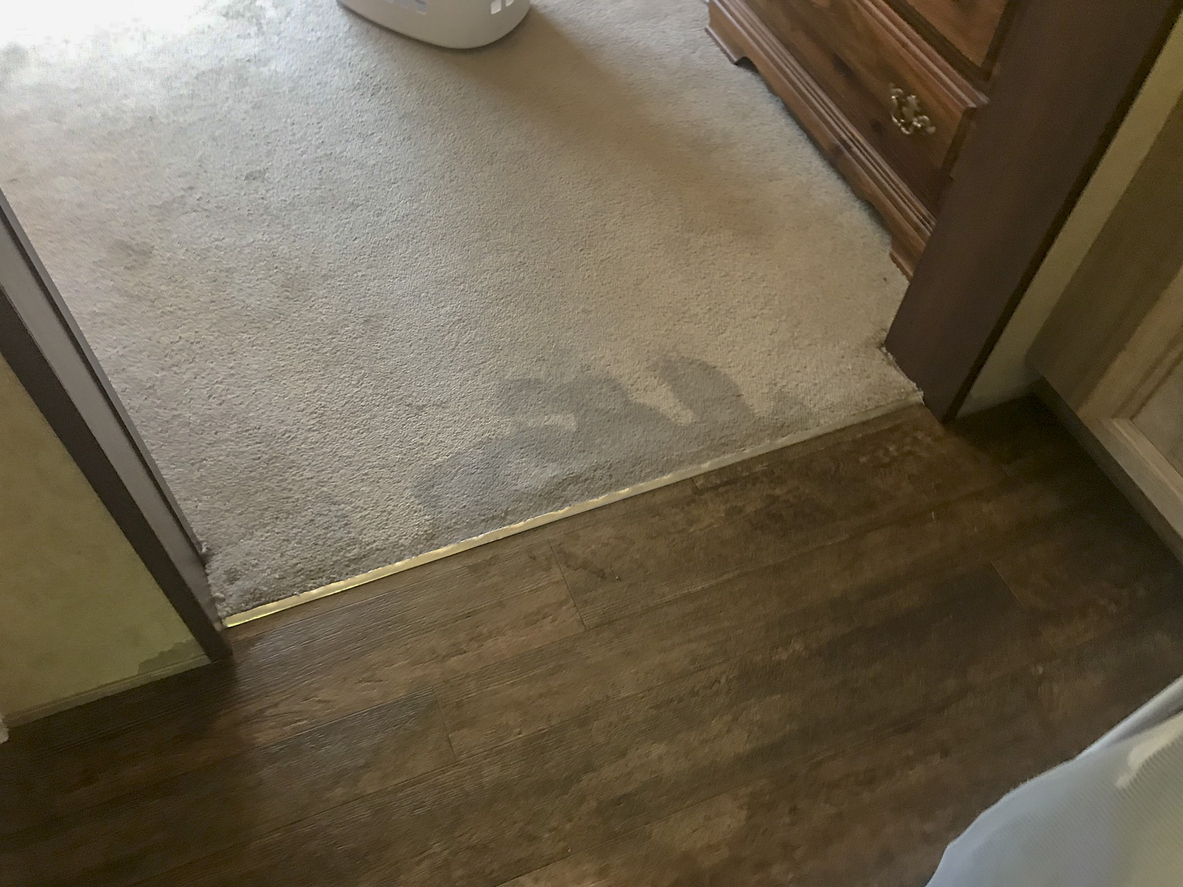
Mold growth often occurs alongside water damage and can be identified by dark spots on the flooring.
Mold growth is a common (and concerning) companion to water damage, particularly in environments where moisture remains unaddressed for a long time. One sign of mold is the appearance of dark spots or patches on the flooring, which may vary in color from black and green to brown depending on the type of mold. These spots can appear in the grout lines of tiles, on the corners and edges of hardwood floors, or within carpet fibers.
The presence of mold indicates not just surface moisture but also points to deeper, more persistent water intrusion that could compromise the structure of the floor and the subfloor beneath. Homeowners will want to be particularly vigilant about mold growth and seek the help of a professional, since mold can rapidly spread to other areas if not promptly and properly addressed.
Mold and moisture issues can also be present in a home even in the absence of obvious signs of water damage. Homeowners will want to familiarize themselves with the differences between water damage vs. mold and take prompt action if they spot either or both.
Mold or mildew growth underneath the flooring may also result in an unpleasant musty odor.
Moldy flooring can develop an unpleasant musty odor that’s noticeable even before the mold can be seen. This odor is typically earthy and damp, similar to the smell of wet socks or rotting wood, and often comes from areas where water has accumulated unnoticed, such as under carpets, in subflooring, or between the layers of laminate and vinyl flooring.
This musty smell is not just a nuisance but also a health concern, as it indicates poor indoor air quality that could affect the respiratory health of those living in the home. It’s also worth noting that unusually high indoor humidity levels without an obvious cause can also be a sign of moisture problems. If a homeowner has any concerns about mold growth, it’s best to call in one of the best mold removal companies, such as ServiceMaster Restore or ServPro, for an inspection.
If water damage has extended to the subfloor, the floor may feel soft or spongy when it is walked on.
When water damage penetrates beyond the surface and reaches the subfloor, homeowners may feel a soft or spongy sensation when walking on the surface. With a water-damaged subfloor, the base material, which is typically plywood or particleboard, absorbs water and begins to deteriorate and become uneven.
“If you notice that the floors in a home are not level or feel spongy when walked on, it could be due to water damage underneath,” said Colacicco. “This can happen when water seeps into the subfloor and causes it to warp or weaken.”
The spongy feeling indicates that the water damage is extensive and potentially affecting the structural stability of the floor. In severe cases, the water damage could even pose a risk of collapse if the damage goes unchecked. If homeowners suddenly notice a soft feeling underfoot in a certain area or room, they’ll want to find someone who replaces subfloors to perform an inspection.
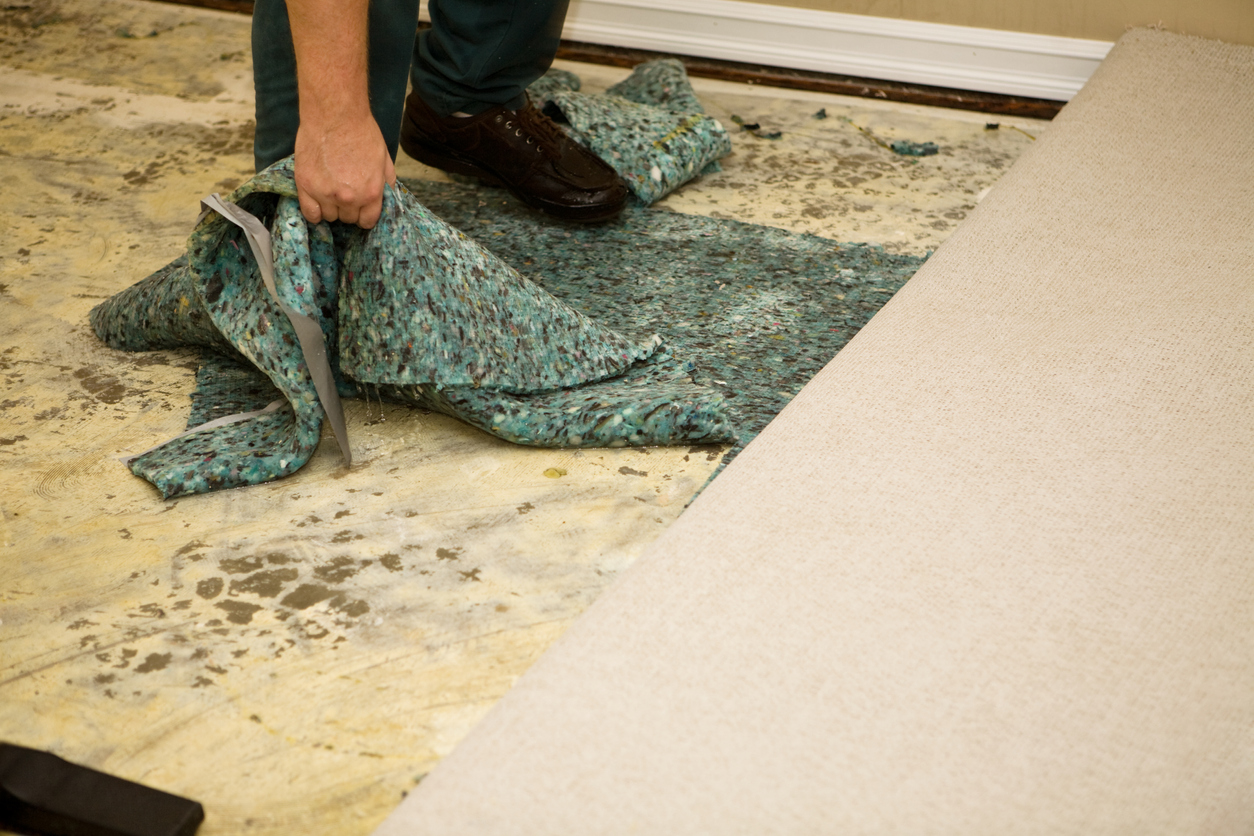
What to Do About Water Damage Under the Floor
When a homeowner notices any of the signs of water damage, it’s important to address them as soon as possible. Homeowners who observe flooring water damage will want to identify the water source, then contact the necessary professionals to address any leaks and handle repairs and restoration.
Once water damage under the floor has been identified, the next step is to determine the source of the moisture problem.
There are a few common culprits when it comes to moisture that causes damage in a home. One is plumbing leaks, which can originate from broken pipes, faulty connections, or aging plumbing fixtures. These are often hidden within walls or under floors, slowly causing damage over time.
Homeowners will also want to inspect their appliances, as leaks from dishwashers, washing machines, refrigerators, or water heaters can lead to water seeping into the floor. Such leaks might go unnoticed until bigger signs of damage appear.
Additionally, flooding can rapidly inundate floors with water, whether from external sources such as heavy rains and overflowing rivers or internal incidents such as overflowing bathtubs. It’s essential to identify the source of water immediately to know how to proceed with repairs.
Any active leaks will need to be repaired promptly to minimize damage and halt mold growth under the floor.
Addressing active leaks quickly is important, but how can a homeowner tell if a pipe is leaking under the floor? A leaky pipe may be to blame if there are unexplained increases in water bills, the sound of running water when all taps are off, wet spots on the floor, or a persistent musty odor in the home. These signal that a hidden leak might need to be addressed by one of the best plumbing services, such as Mr. Rooter or Roto-Rooter.
“If you suspect that your home may have hidden water damage under the flooring, it’s important to call in a plumbing professional as soon as possible,” Colacicco says. “The longer you wait, the more severe the consequences can become.”
To accurately detect and locate leaks, plumbers use specialized equipment and techniques, such as acoustic leak detectors. Acoustic leak detectors listen for the sound of escaping water through the flooring. Infrared cameras are capable of detecting temperature variations caused by damp spots and water flow in hidden pipes. Some plumbers might also use pressure tests on water lines or employ video inspection tools to visually inspect pipes for damage. A plumber may need to cut into the floor to access and fix the damaged pipe.
Small leaks or spills may be dried using a fan or dehumidifier.
Generally speaking, minor spills and leaks will dry within a few days if the area is ventilated. In these circumstances, using fans or dehumidifiers helps circulate air and reduce moisture levels. However, the time it takes for water to dry under the floor can vary based on several factors, including how much water leaked or spilled, the type of flooring, circulating temperature, and humidity levels. For instance, in cases where water has seeped deeper or spread more broadly beneath the flooring, the drying process can take up to a week or longer.
It’s important to ensure that the area is thoroughly dry—not just at the surface but also beneath. Homeowners will want to make periodic checks for any signs of remaining moisture and use fans and dehumidifiers for as long as the moisture is detectable. In some situations, lifting a section of the flooring for direct air circulation may be necessary. It’s worth noting that mold may begin growing in as little as 24 to 48 hours after water infiltration has occurred, so it’s vital to monitor for growth throughout this process.
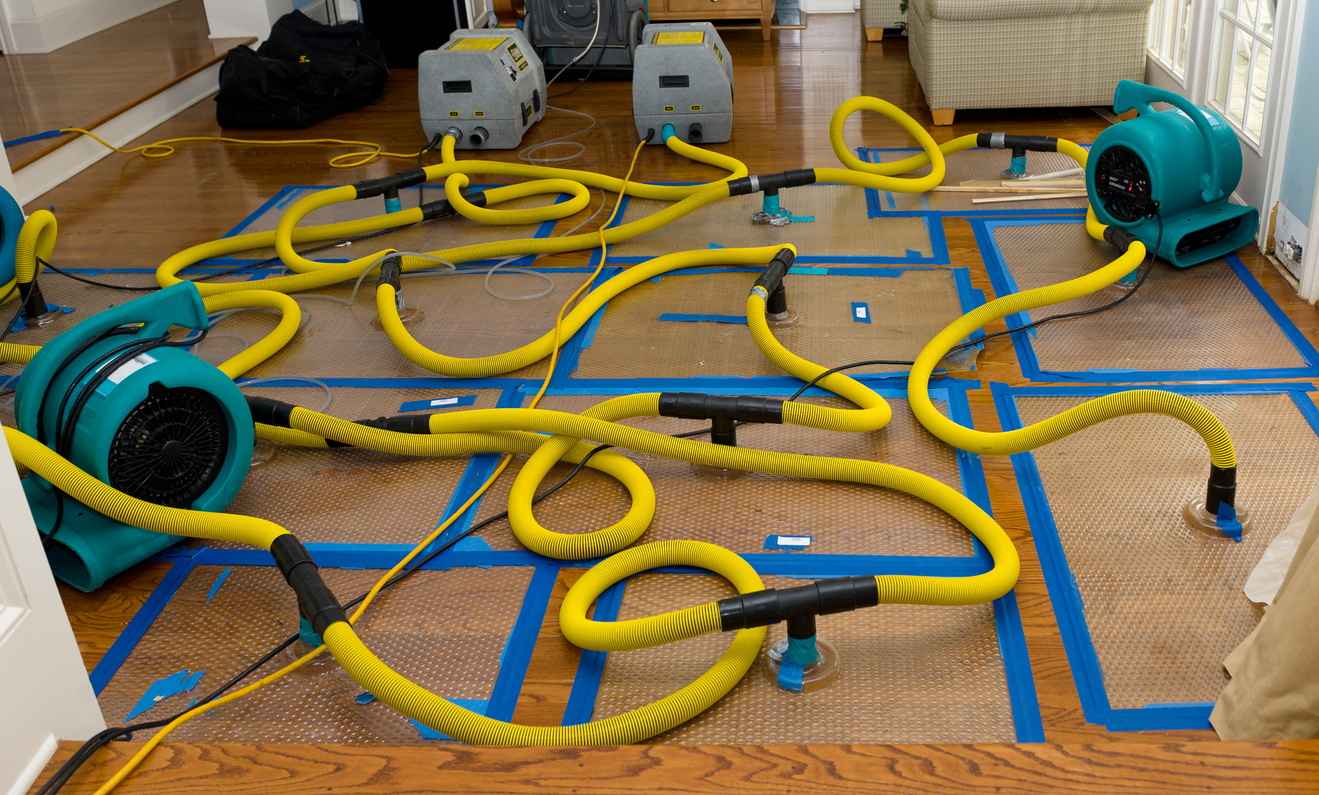
If the water damage is extensive or the result of a sewage backup, it’s usually best to call a water damage restoration service.
For homeowners wondering what to do about extensive water damage under the floor, it’s best to enlist the help of a professional water damage restoration service, especially in cases of significant flooding or sewage backups. These situations often involve large volumes of water and contaminants that can pose serious health risks.
The best water damage restoration services (such as ServiceMaster Restore or ServPro, both of which tackle these issues in addition to mold remediation) specialize in safely removing this water, sanitizing affected areas, and restoring the home to a safe and healthy condition. Their expertise and equipment are crucial in effectively handling these complex situations. They employ industrial-grade water extractors, air movers, dehumidifiers, and advanced drying techniques to ensure the moisture is completely removed or thoroughly dried, in addition to fully sanitizing the area if necessary. Additionally, these professionals can assess structural damage, clean up mold growth, and assist with repairs to floors, walls, and other affected areas. It’s worth noting that water damage restoration costs can add up quickly. Those who live in flood-prone areas may want to consider investing in a policy from one of the best flood insurance companies to protect themselves from future flood damage costs.
While it may be tempting for homeowners to handle water damage or mold remediation themselves, the Environmental Protection Agency (EPA) advises that mold growth that exceeds 10 square feet and water damage from gray water or sewage (blackwater) be handled professionally. Homeowners who attempt to address extensive water damage or sewage backup without professional assistance can worsen the problem, and doing so poses significant health and safety risks. The cost of water damage restoration is well worth it to ensure the safety and stability of a home.
Flooring that has significant water damage or is structurally unsound will need to be replaced.
When flooring sustains water damage or becomes structurally unsound, replacement is inevitable. This level of damage is often characterized by severe warping, buckling, or rotting in the case of wood floors. Delamination may be expected in vinyl or laminate flooring. These conditions not only detract from the aesthetic appeal of the floor but also pose safety hazards. Weakened flooring can lead to an increased risk of accidents, injuries, or structural failure, including the collapse of the floor.
The cost of flooring installation can depend on the flooring type and the extent of the damage. The cost to replace a subfloor in addition to the flooring may increase the price by as much as $3,000. Among the available flooring materials, wood flooring is most susceptible to water damage. For those wondering how to repair a water-damaged wood floor, professionals may recommend refinishing, replacing a few damaged planks, or installing completely new flooring. Brand-new hardwood flooring costs around $4,721 on average. Homeowners will want to consult with one of the best flooring companies to replace flooring and ensure it is done correctly and efficiently, thereby restoring the safety, functionality, and aesthetic of their living space.

